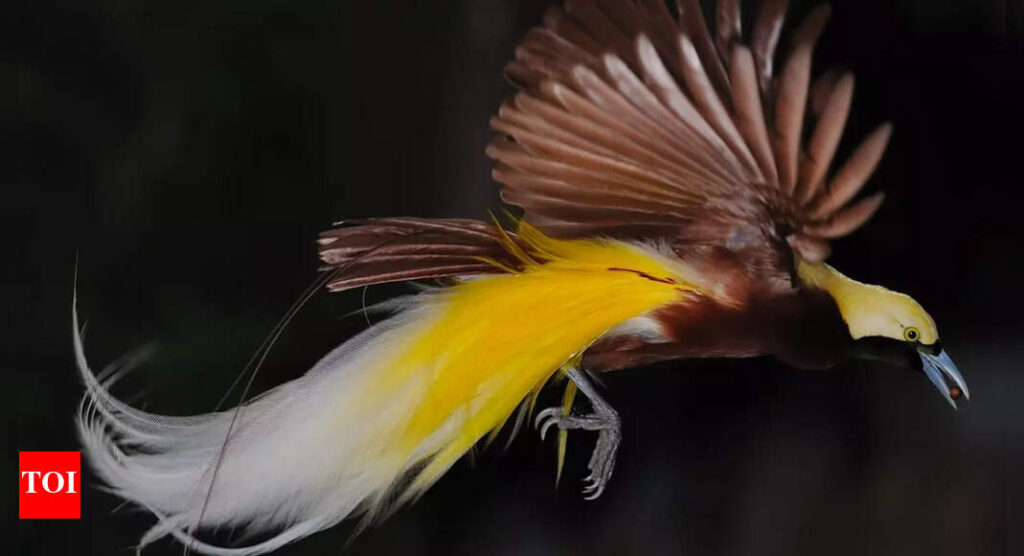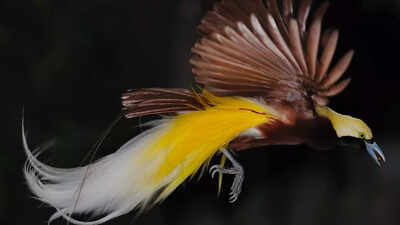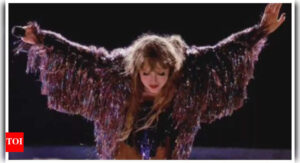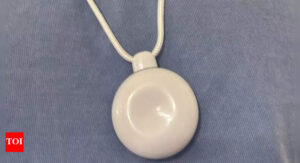Glow in the dark beings: Birds of paradise ’emit light’, says study

Birds are among the most beautiful and interesting creations of nature, and among them, the Birds-of-paradise have caught the imagination of scientists and nature lovers for their vibrant colours and unique feathers.These birds are found mostly in New Guinea and the surrounding regions of Australasia, (Australia, New Zealand, and the neighboring islands) and are best known for their theatrical mating rituals, which seem almost unreal. But now, scientists have found another detail about these creatures, and that’s been hiding in plain sight.
These birds shine!
For years, researchers believed they had a solid understanding of just how stunning birds-of-paradise are. But a new study has revealed something no one had seen before. According to a new study published in the journal Royal Society Open Science, 37 out of 45 known species of birds-of-paradise show signs of biofluorescence, which is a phenomenon where certain parts of the body absorb UV or blue light and emit it at a lower wavelength, making them appear to glow.Dr. Rene Martin from the American Museum of Natural History in New York, the study’s lead author, explained the effect, “At a minimum, it would make these biofluorescent areas brighter, like a yellow feather may be more green-yellow, a white feather may be brighter and slightly more green-yellow.”To discover this hidden glow, researchers examined preserved male and female specimens from the museum’s ornithology collection. They placed the birds under blue and ultraviolet lights in a dark room to observe any fluorescent effects.
The experiment had ‘illuminating’ results
Males in 21 species showed glowing features on areas like their head, neck, belly, tail feathers, and face wattles. Surprisingly, 37 species either showed or were likely to show biofluorescence inside their mouths and throats. Female birds also showed these traits, particularly on their chest, belly, and feather stripes around the eyes.Martin explained that while biofluorescence may not change the colour significantly, it does enhance visibility, “It may not have the effect of making something look different, but becoming brighter and more eye-catching.”
Some of these birds did not show these signs
Interestingly, species in the genera Lycocorax, Manucodia, and Phonygammus did not show this trait. Researchers believe this suggests that biofluorescence was present in a common ancestor but was lost in these specific lineages.The discovery could offer information about courtship behaviours. For example, male Lophorina birds are known to open their glowing mouths during displays to attract females. “Male birds-of-paradise often have these patches next to stark black [or] dark plumage, so the added effect of biofluorescence may aid in making these signal areas even brighter while being used during displays,” said Martin.Similarly, for the females, the function could be different. “The location and patterns of their biofluorescent plumage of many species are much more in line with its possible use as camouflage,” she added.Martin said that even such well-documented birds continue to surprise researchers. “Even a charismatic group like the birds-of-paradise, that have been studied extensively, can still offer new insights into avian vision, behaviour and morphology,” she said.





